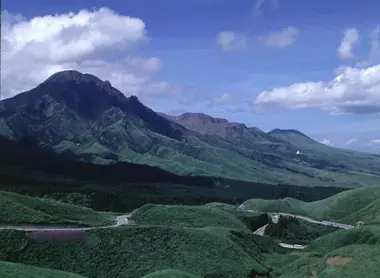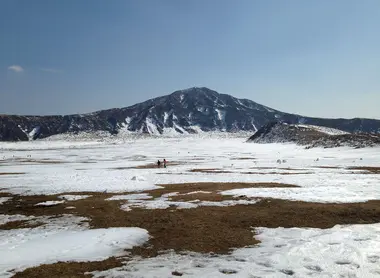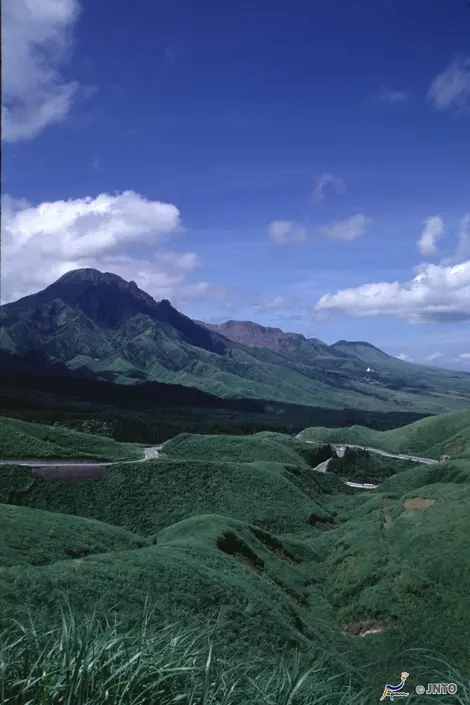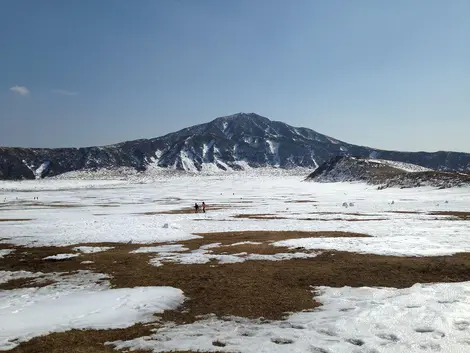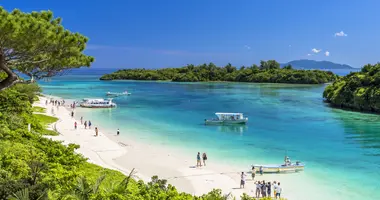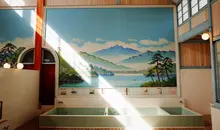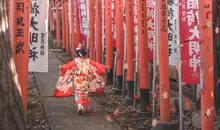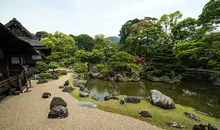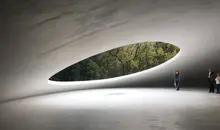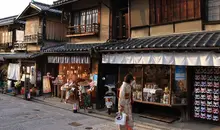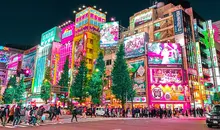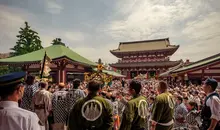Aso Kumamoto hike
- Published on : 07/10/2015
- by : G.L.
- Youtube
Hiking in Japan
In the heart of the island of Kyūshū, Mount Aso stands majestically as Japan's largest active volcano. With its impressive 130 km caldera and five main peaks, this destination offers hikers breathtaking scenery. Between golden meadows, verdant forests and lunar landscapes, Mount Aso represents a unique adventure for nature lovers. The trails that wind around its slopes allow you to explore a territory shaped by millennia of volcanic activity. Let's find out how to make the most of this exceptional hiking experience in Kumamoto.
Mount Aso hiking options
Mount Aso offers a wide range of hiking options for all abilities. Of the five peaks surrounding the volcanic depression (Naka, Neko, Taka, Eboshi and Kishima), it is on the western flank of the massif that the most signposted and accessible trails are to be found. These trails allow walkers of all abilities to discover the region's unique volcanic landscapes.
Whichever option you choose, it's important to take certain precautions. Temperatures can be harsh at 1300 meters altitude, even in spring, and toxic gas fumes are a real danger depending on wind direction. So it's essential to find out about weather conditions and volcanic activity before setting off on a hike.
Volcanic activity may result in access restrictions. The Naka-dake crater, for example, is sometimes closed due to toxic gases escaping from it. Before any hike, it is advisable to check with the tourist information center at JR Aso station or the volcano museum whether the trails are open.
The Mount Taka-dake hike: itinerary and features
Mount Taka-dake, at 1592 meters above sea level, is the highest point in the Aso volcanic massif. This hike offers a more demanding but extremely rewarding experience for experienced walkers.
The route generally begins at the Naka-dake crater parking lot. From here, the trail gradually climbs to the summit of Taka-dake, offering breathtaking views of Naka-dake crater and the entire caldera. Difficulty is considered moderate to difficult, mainly due to the 750-meter vertical drop and weather conditions that can make the trails muddy and slippery.
To the east of the massif, a more difficult trail, reserved for strong walkers, links the Sensuikyo valley - famous for its rhododendrons - to Mount Naka via Takadake. The route has an impressive 600-meter vertical drop and requires good physical condition. It can be reached from JR Miyaji station, either on foot or by cab (approx. 2,000 yen).
It's important to note that this hike is often closed due to the risk of eruption. Always check access conditions before you go. When accessible, it offers one of the best possible views of the entire Aso volcanic complex.
The Mount Eboshi-dake alternative: a more accessible route
For those looking for a less demanding hike, or when access to Taka-dake is closed, Mount Eboshi-dake (1337 meters) is an excellent alternative. This hike is particularly popular for its relative ease and spectacular views.
It usually starts from the volcano museum and the Kusasenri plain, an extinct crater of Eboshi. Access is possible by bus from Aso town station, but the bravest can also attempt the route on foot. The path to the summit is well-defined and signposted, with only about 200 metres of ascent.
The hike takes approximately one hour to reach the summit. From here, it's possible to continue on to the spas of Tarutama and Jigoku Onsen. The 360-degree view from the summit is truly superb, taking in the smoking Nakadake crater, the Kusasenri plain and much of the interior of the Aso caldera.
This hike has the advantage of being generally open even when other trails are closed due to volcanic activity, as it lies at a safer distance from the active Naka-dake crater.
Points of interest and views not to be missed on your hike
During your hike on Mount Aso, there are several points of interest that deserve special attention. The most spectacular is undoubtedly the Naka-dake crater, measuring 600 metres in diameter and 160 metres deep. When access is permitted, this active crater offers a breathtaking spectacle with its blue acid lake formed by volcanic gas discharges.
The Kusasenri plain is also a major point of interest. This vast green space was once a crater that gradually filled with water to form a small lake. In summer, the meadow is a brilliant green, while in autumn, it takes on golden hues thanks to the silvery pampas grasses that the Japanese call "susuki". Horses and cows graze peacefully, adding to the area's bucolic charm.
Mount Komezuka, a perfectly formed volcanic cone that locals compare to an upside-down rice bowl, is another remarkable site. Although there is no "official" path to it, its distinctive silhouette is visible from several hiking points.
For geology buffs, the Sunaenri (Plain of Sands) area presents a fascinating lunar landscape. This immense expanse of volcanic ash is strewn with volcanic bombs of all sizes, thrown up by past eruptions.
Finally, from the peaks, on a clear day, it's possible to see the Kuju chain of volcanoes more than 25 km away, offering an impressive perspective on the scale of this volcanic region.
How to get to Mount Aso from Kumamoto
To reach Mount Aso from Kumamoto, travellers have several options. The most convenient is to rent a car, which gives you the freedom to explore the region at your own pace. This is particularly recommended as public transport services are limited in this rural area.
For those who prefer public transport, you can take a local train or express bus from Kumamoto station to Aso station. The journey takes around 2 hours. Once at Aso station, local buses will take you to the various trailheads.
In detail, here are the options available:
- By bus: The Kyûshû Odan Bus runs from Kumamoto to Aso. Get off either directly at Mount Aso (Kusasenri/Aso volcano museum or Mt. Aso nishi station stops), or at Aso station and then take the Aso Crater Line.
- By train: From Kumamoto station, take the Limited Express Aso Boy! line (1h20, 2240 yen) or the Hohi line to Higôzu, then change at Higôzu for the Hohi line to Miyaji (1h35, 1110 yen). Get off at Aso station, then take a local bus.
Please note that some train journeys may be covered by the JR Pass. At present, some train connections may be disrupted following the earthquake that struck the region in 2016, so it's advisable to check timetables before you leave.
Best time and equipment for hiking
The best time to hike Mount Aso is generally from spring to autumn. Spring (April-May) offers mild temperatures and vegetation in full bloom, while autumn (October-November) is distinguished by the magnificent colors of the foliage and pampas grasses that cover the meadows.
Summer can be hot and humid, but temperatures are generally more bearable at higher altitudes. Winter, while beautiful and occasionally snowy, can present additional challenges: roads sometimes closed, slippery trails and very cold temperatures.
As far as equipment is concerned, it's essential to bring :
- Sturdy hiking boots with good grip, as volcanic soil is particularly slippery
- Clothing suited to the season, bearing in mind that temperatures can be considerably cooler at altitude than in town
- Extra layers, even in summer, as the weather can change rapidly in the mountains
- Sun protection (hat, sunglasses, sunscreen), as exposure to the sun is high at altitude
- Sufficient water and energy snacks
- A mask to protect you from possible sulfur fumes
- A trail map or hiking app, although the main paths are generally well-marked
It's also advisable to set off early in the morning to take advantage of the best conditions and avoid potential crowds, especially during the peak tourist season.
Where to stay and how to complete your stay in Aso
Although one day may be enough to explore Mount Aso, extending your stay in the region allows you to discover other attractions and take full advantage of the peaceful atmosphere of this volcanic area.
When it comes to accommodation, there are several options. In the town of Aso itself, you'll find a variety of establishments, from traditional ryokan to modern hotels. The Syukubo Aso, just 600 m from Aso station and 3.9 km from Mount Aso, offers traditional Japanese-style rooms with free private parking.
Alternatively, you can choose to stay in the nearby towns of Kumamoto or Takachiho, which offer more accommodation options. Both are excellent bases for exploring not only Mount Aso but also other attractions in the region.
To enhance your stay, be sure to visit :
- The Aso Volcano Museum, located near the Kusasenri plain, with detailed information on the volcano's formation and history
- The Aso Shrine, one of the oldest in Japan, which, although damaged by the 2016 earthquake, remains open to visitors
- Local hot springs (onsen), including Uchinomaki, Kurokawa onsen and Tarutama, for relaxing after a day's hiking
- Kamishikimi Kumanoimasu Shrine, a Shinto shrine located in a forest southeast of the volcano's slopes
- Koga Cascades, two impressive waterfalls
- For a unique experience, a helicopter flight over Mount Aso offers a spectacular view of the crater and the entire caldera
Food lovers will enjoy sampling local specialities, including Aso beef (aka-gyû), renowned for its tenderness and exceptional taste, as well as the region's dairy products, the fruit of the labor of cows grazing on volcanic meadows.
For the more adventurous, the region also offers other activities such as horseback riding on the Kusasenri plain (March to December) or excursions on scenic routes like the Milk Route, which crosses magnificent rolling countryside.
Whether you come for a simple day hike or a longer stay, Mount Aso and the surrounding region offer a memorable experience in the heart of one of Japan's most impressive volcanic landscapes.
